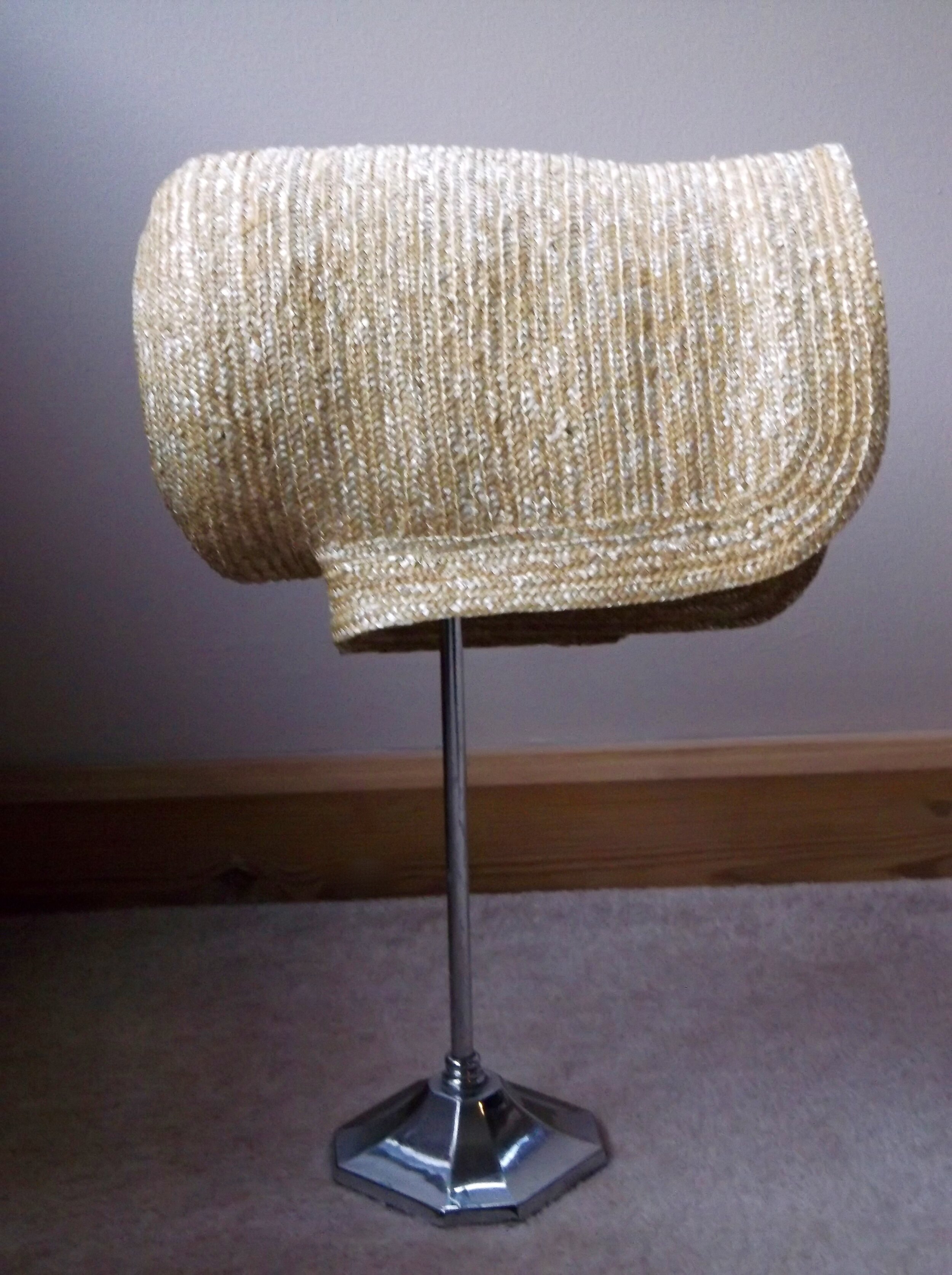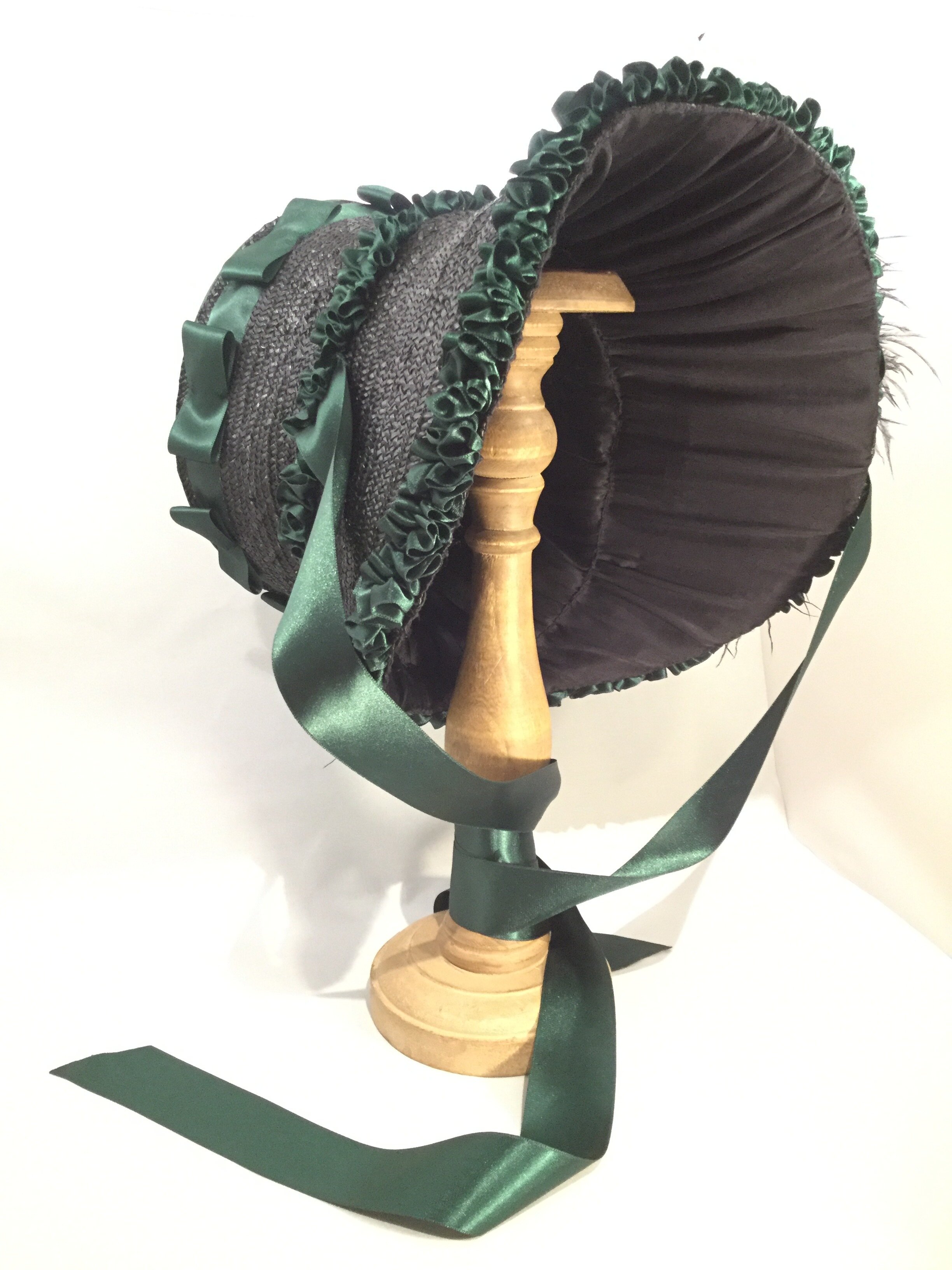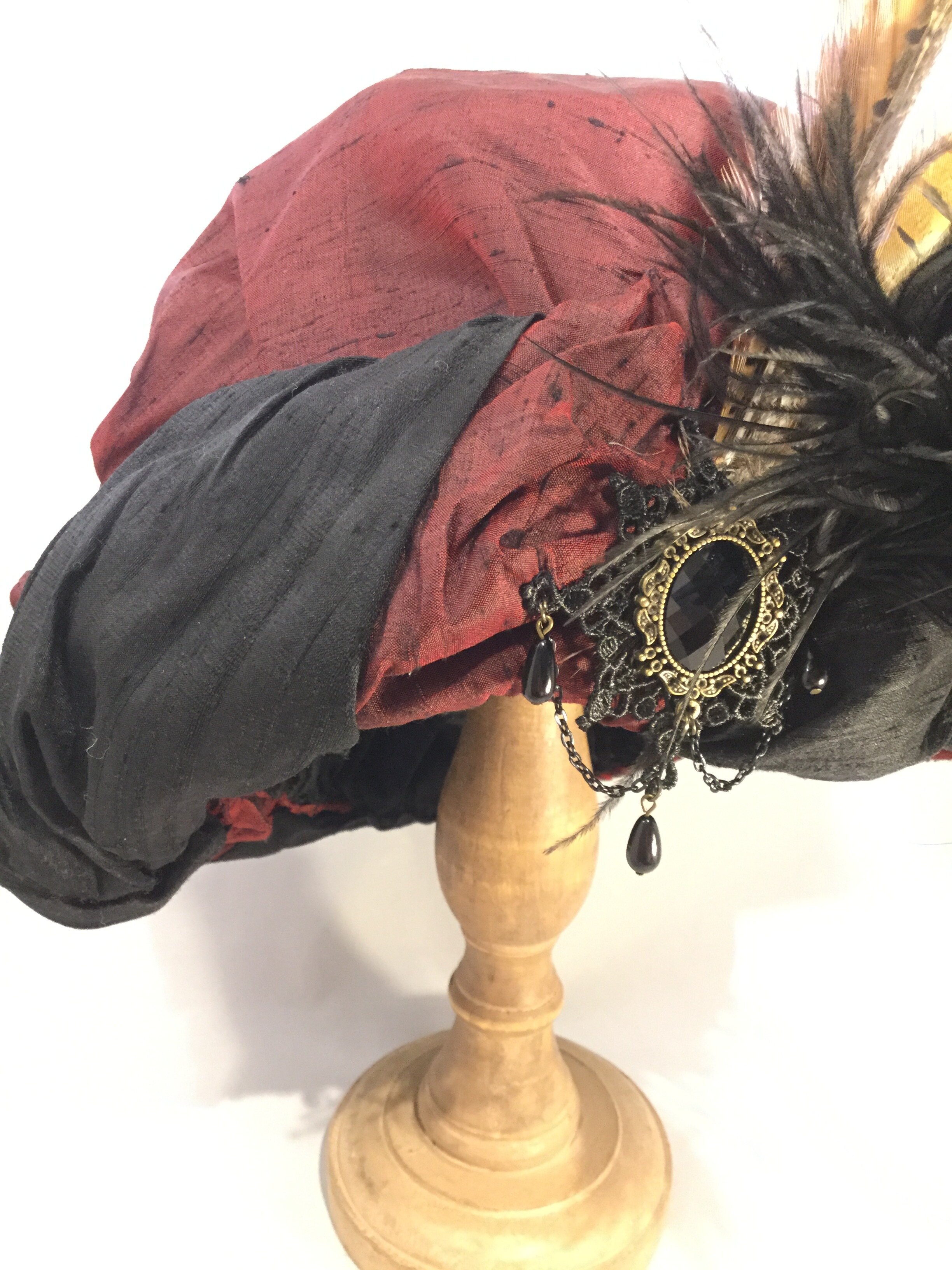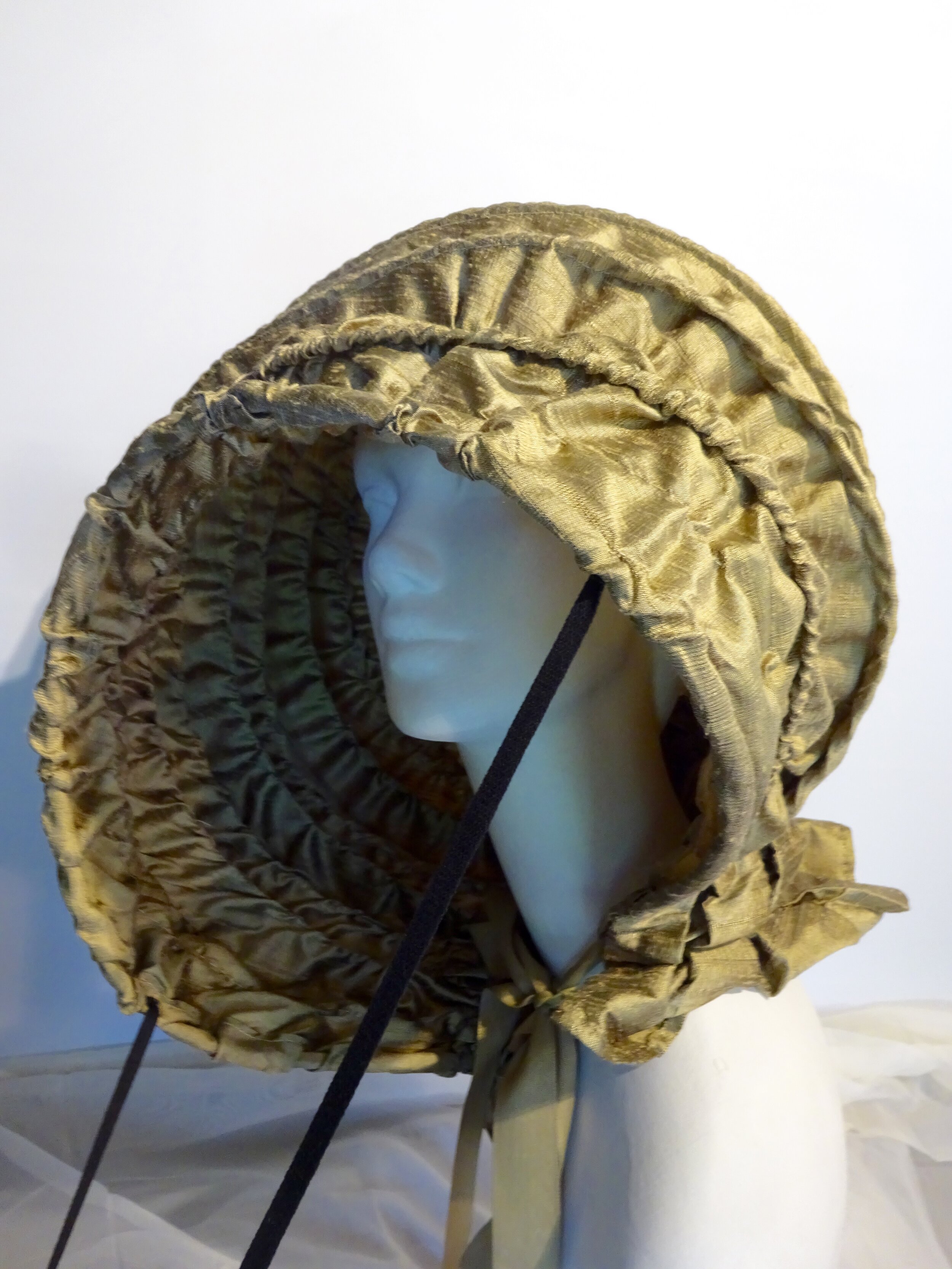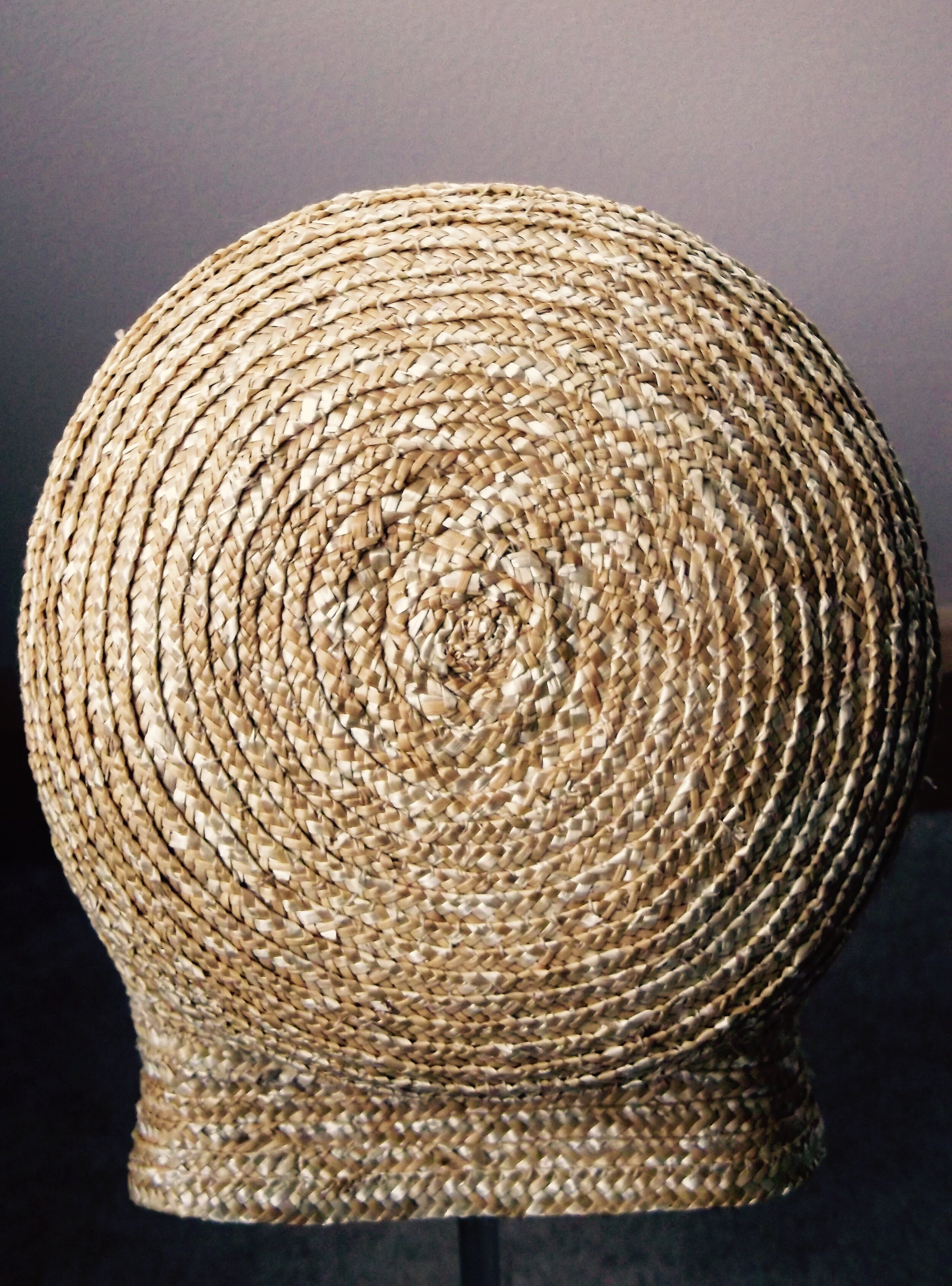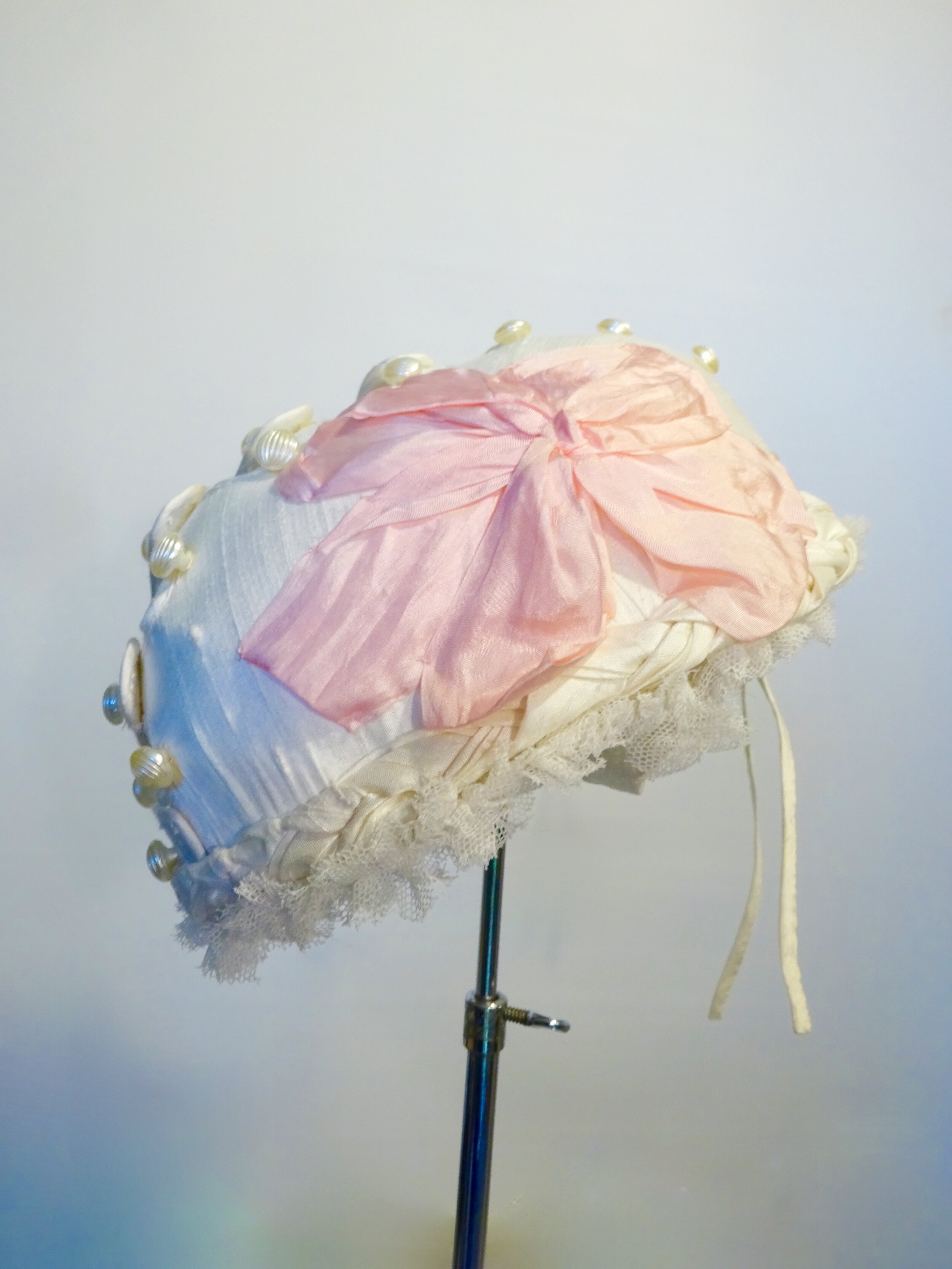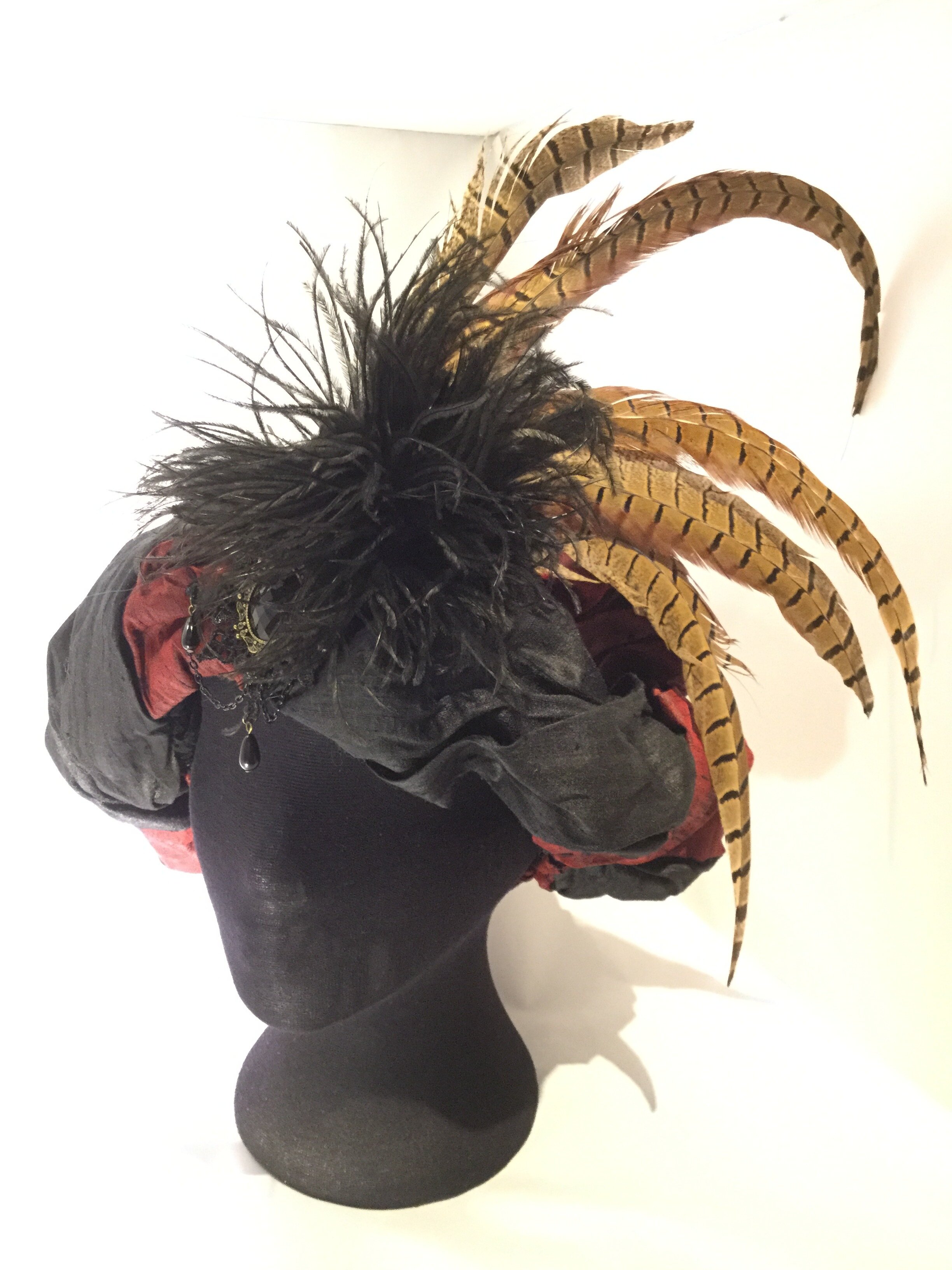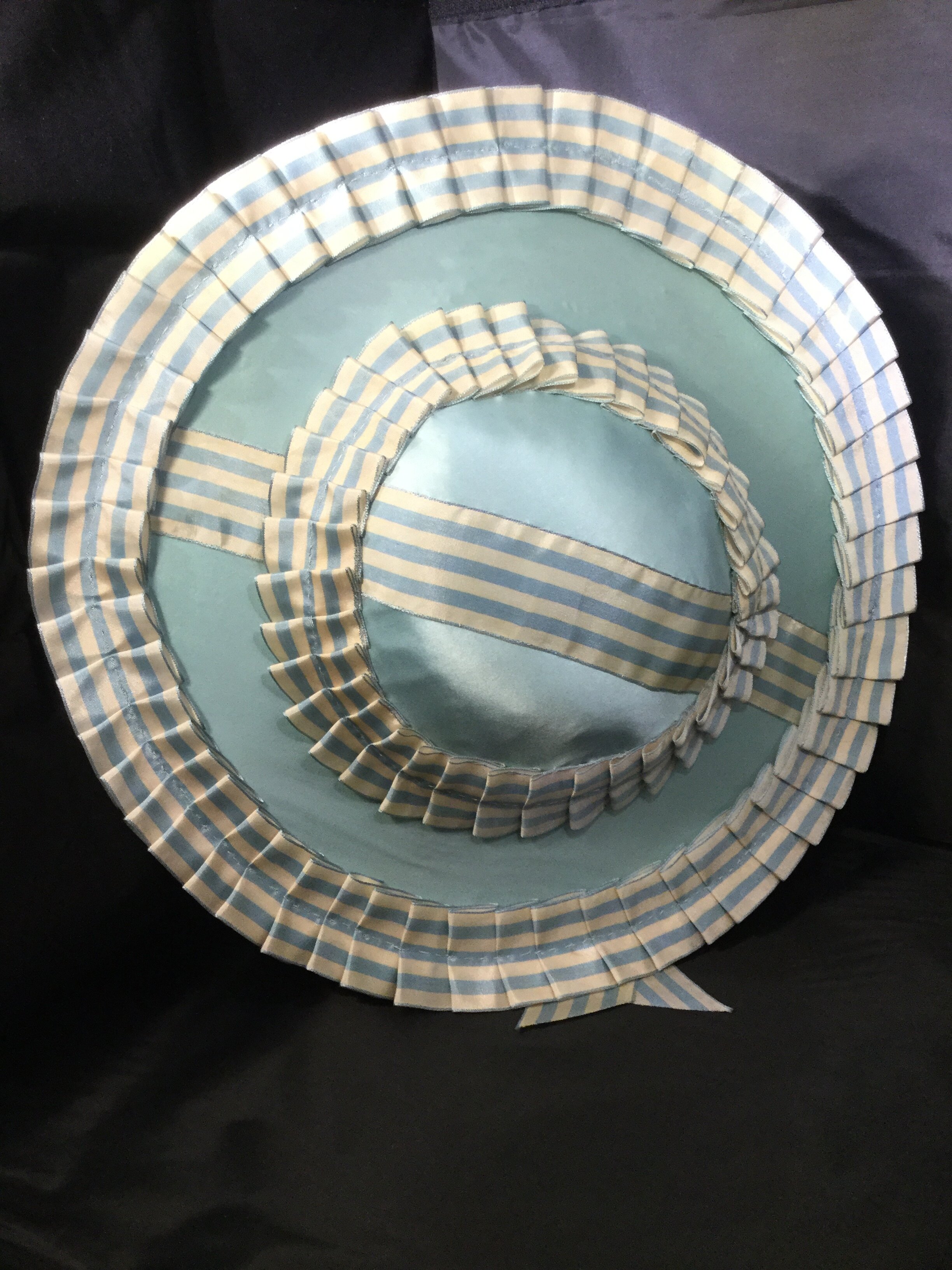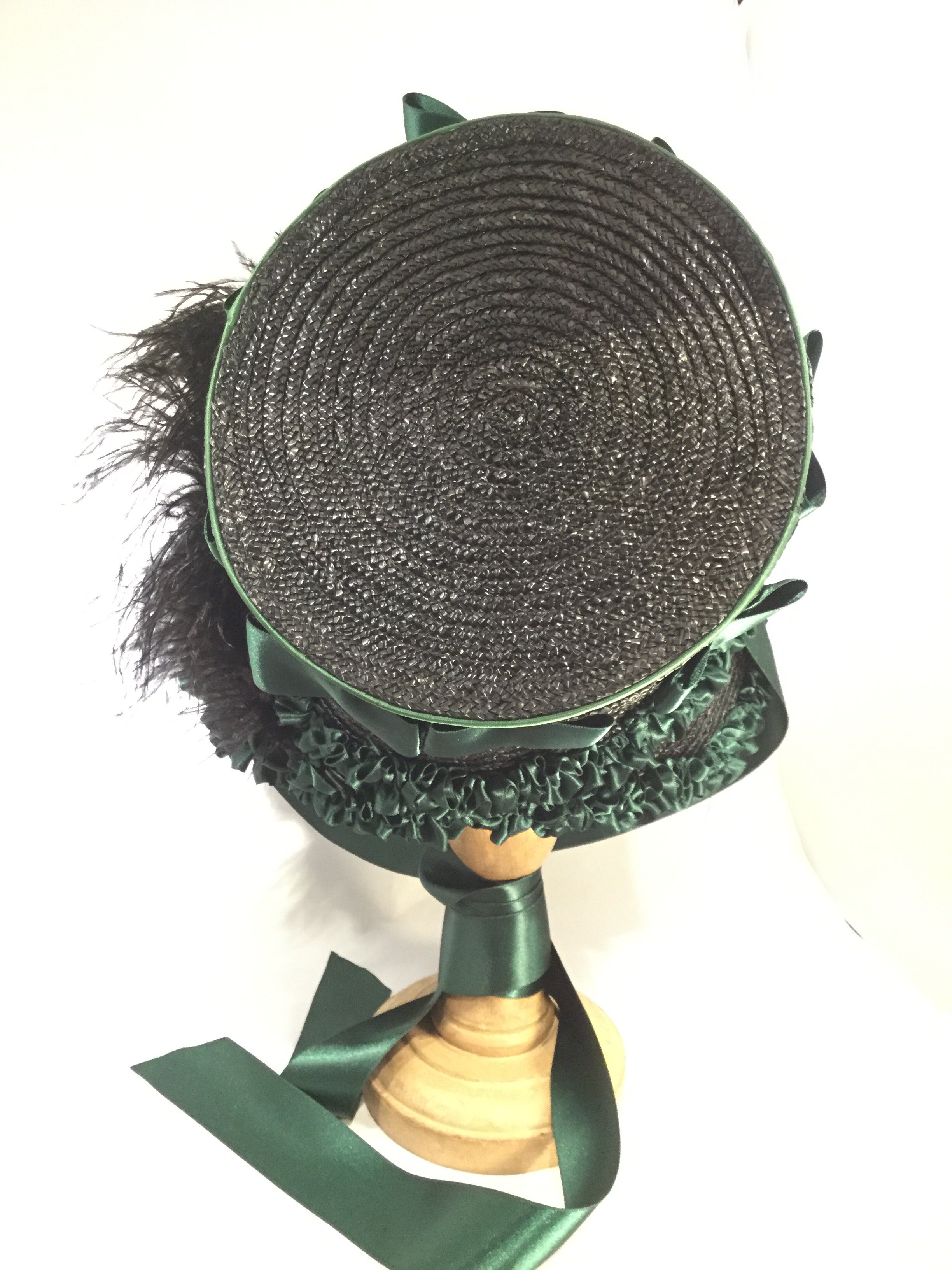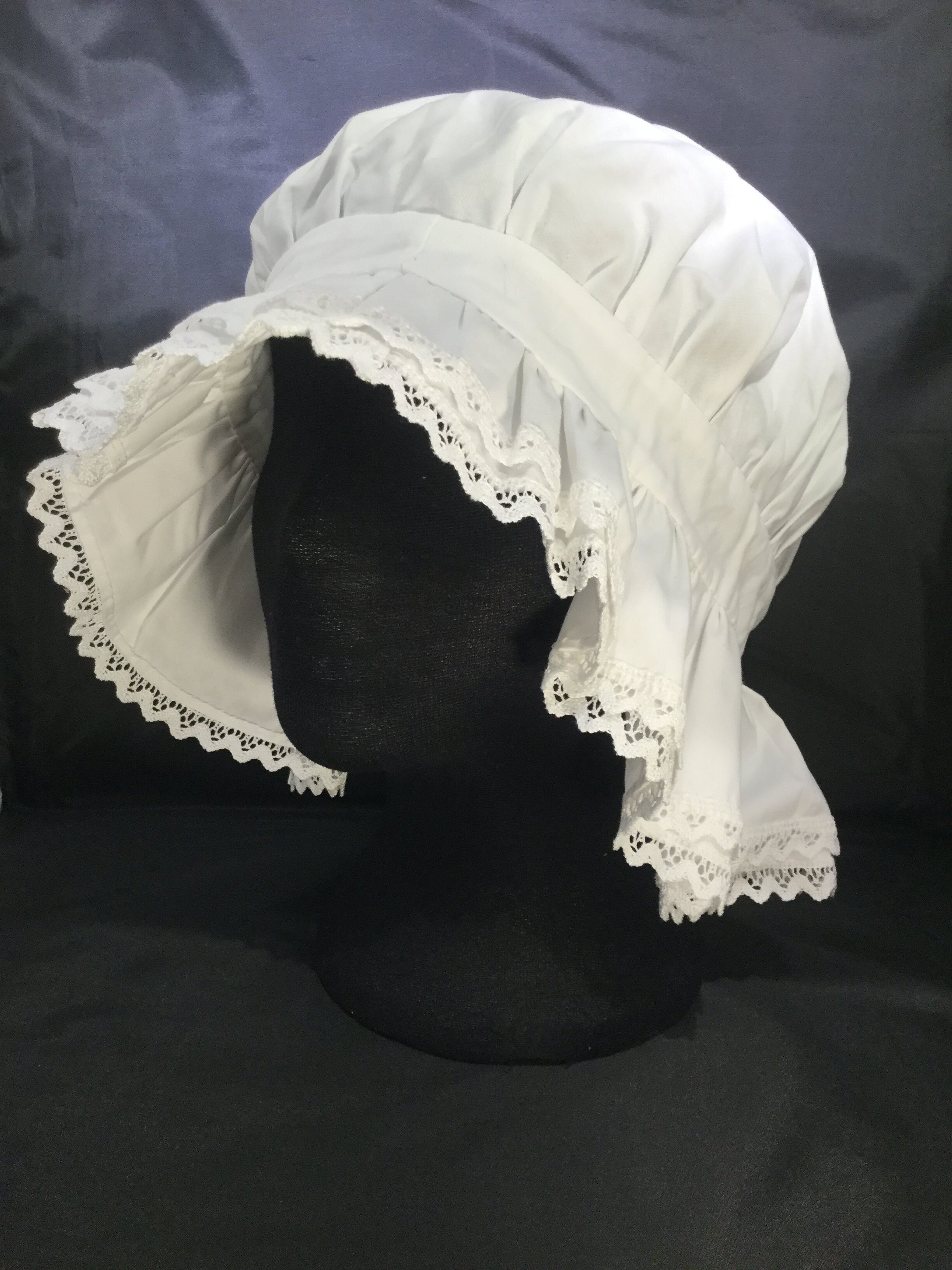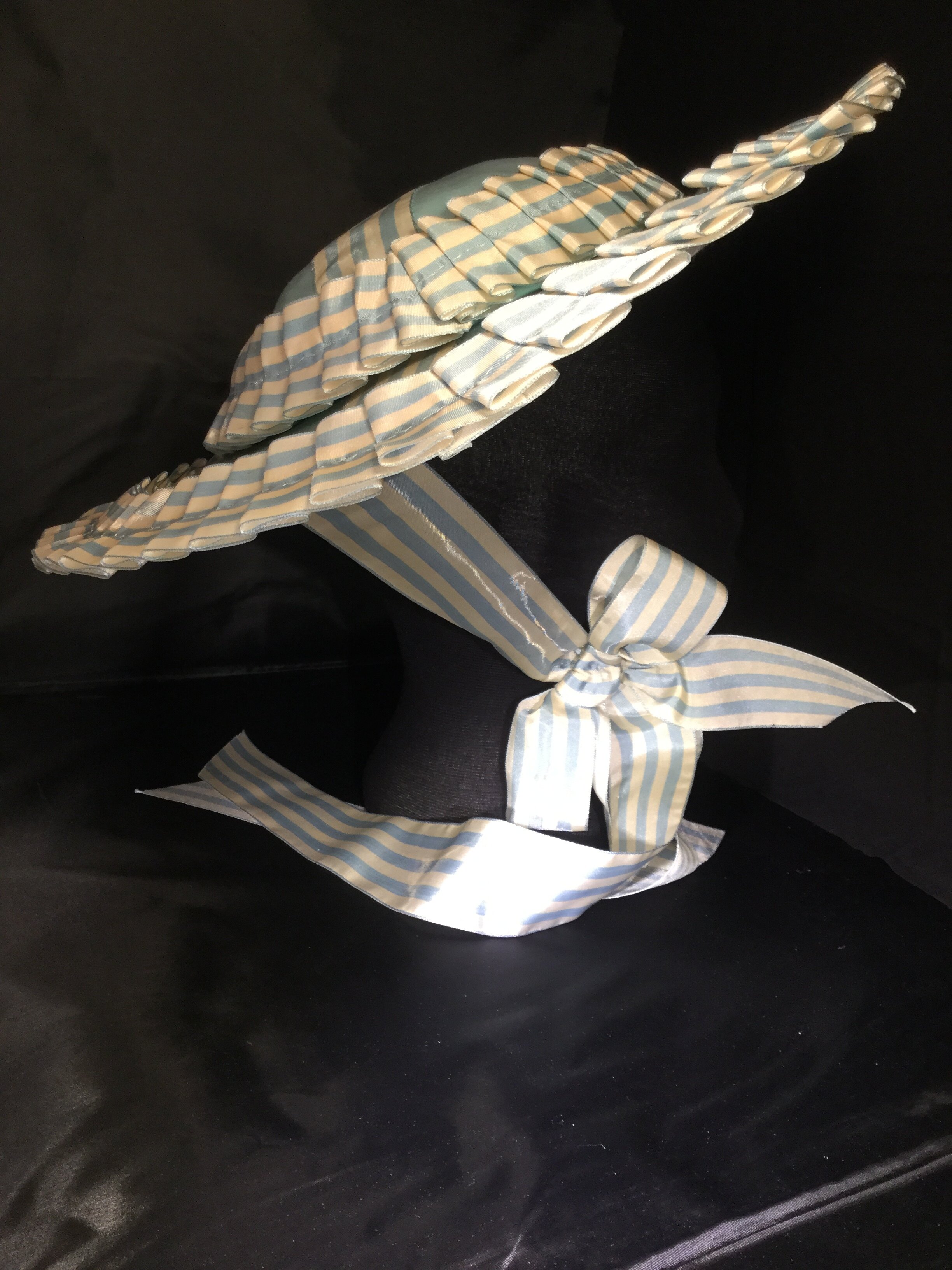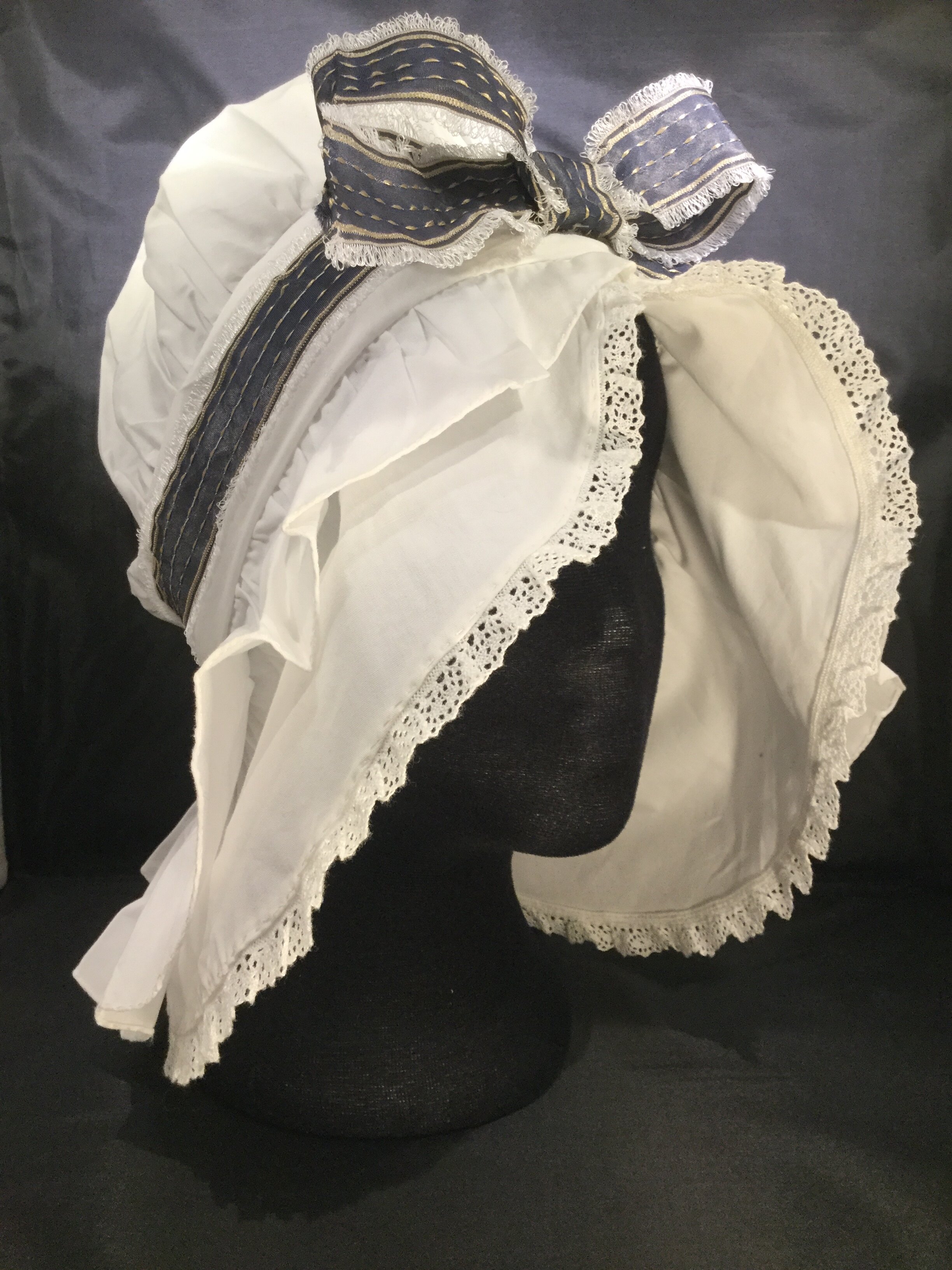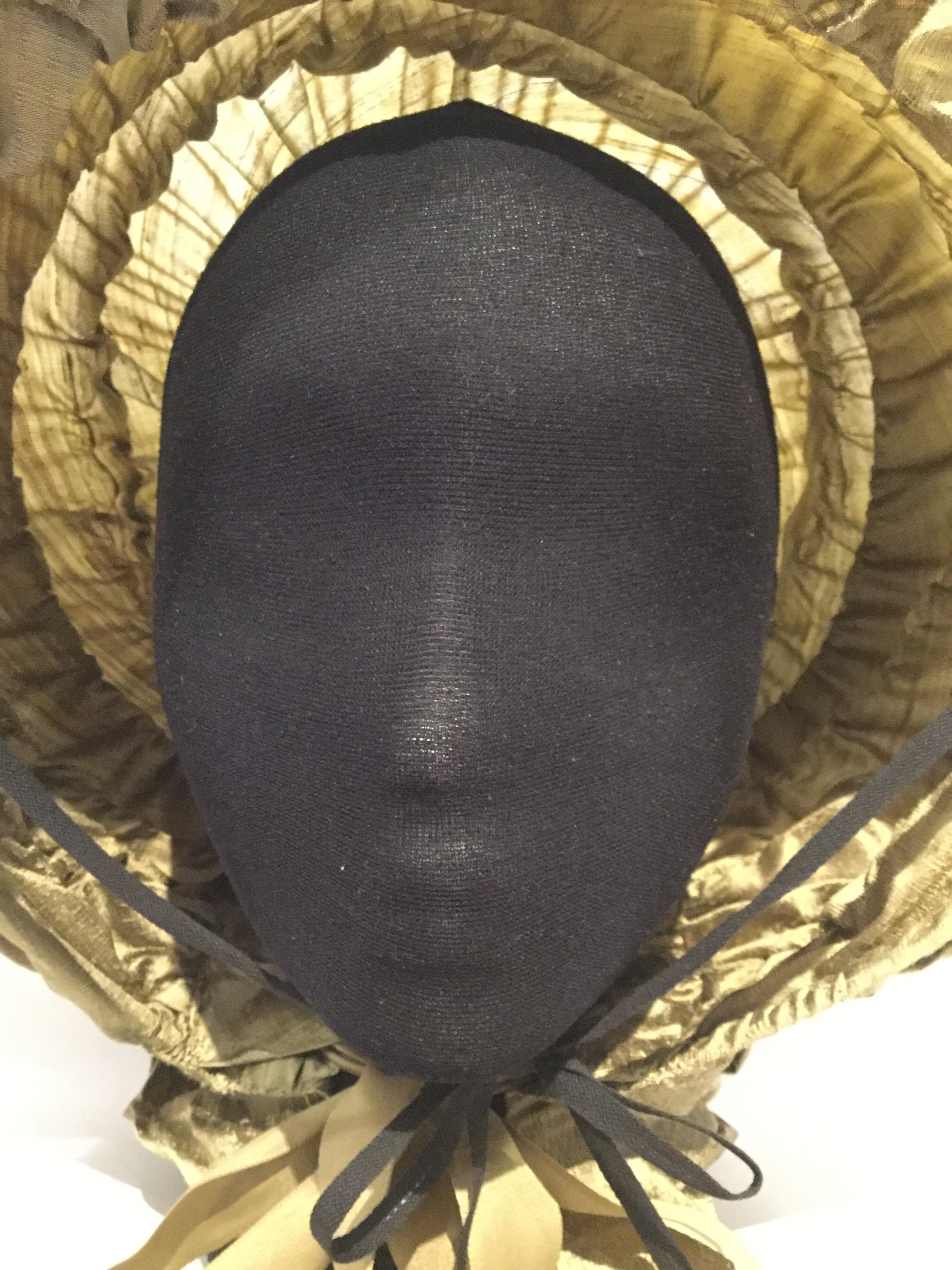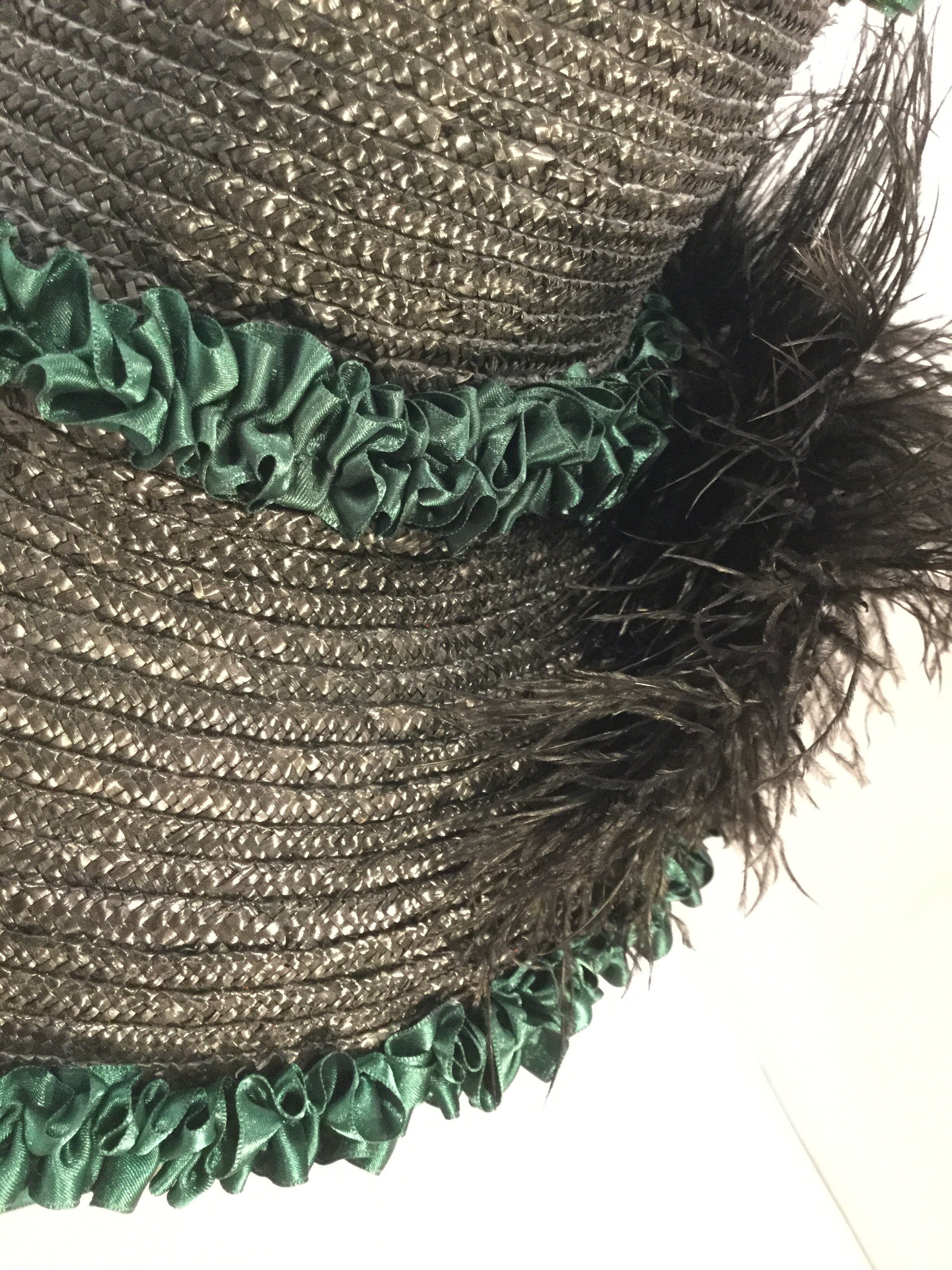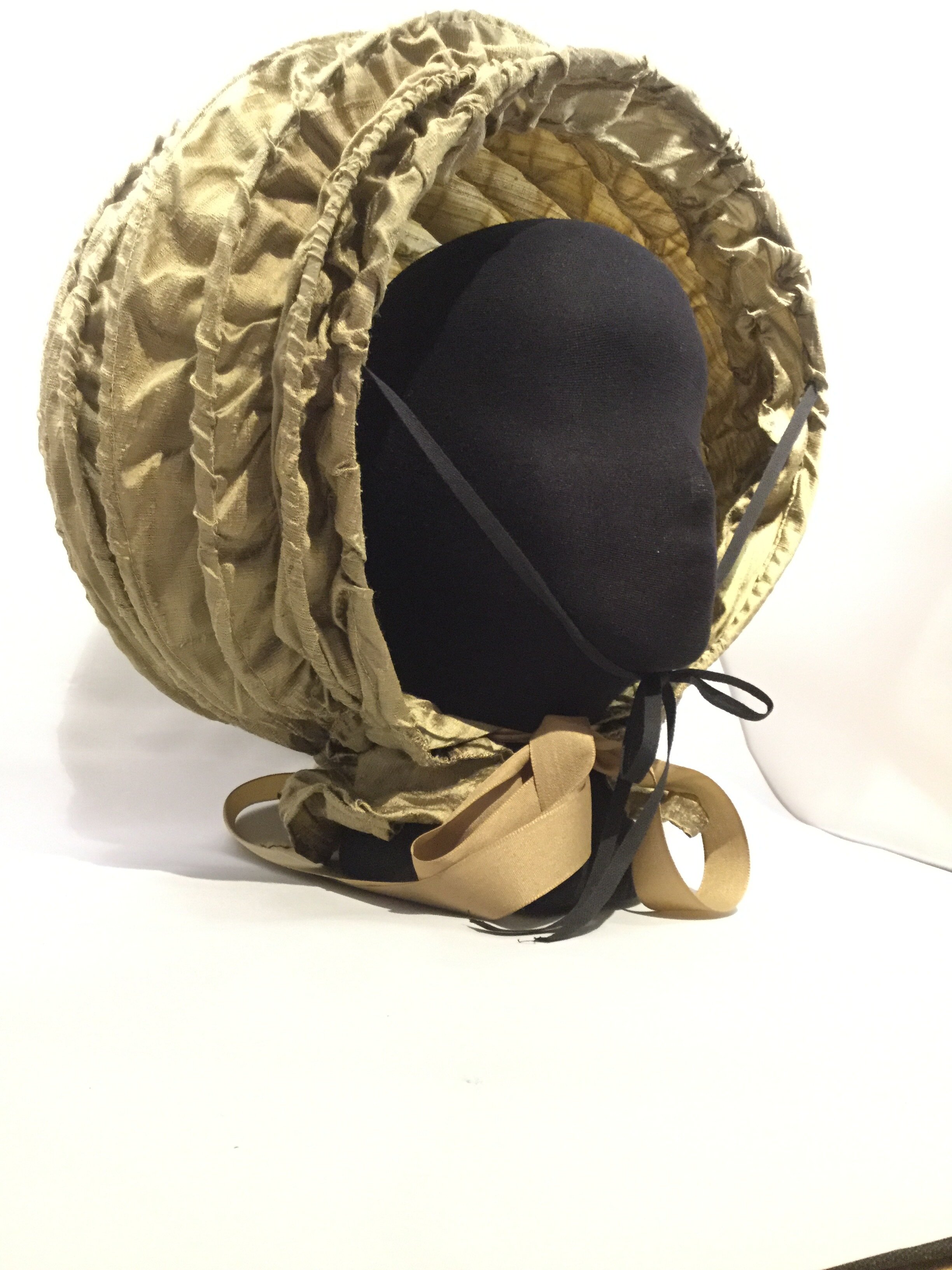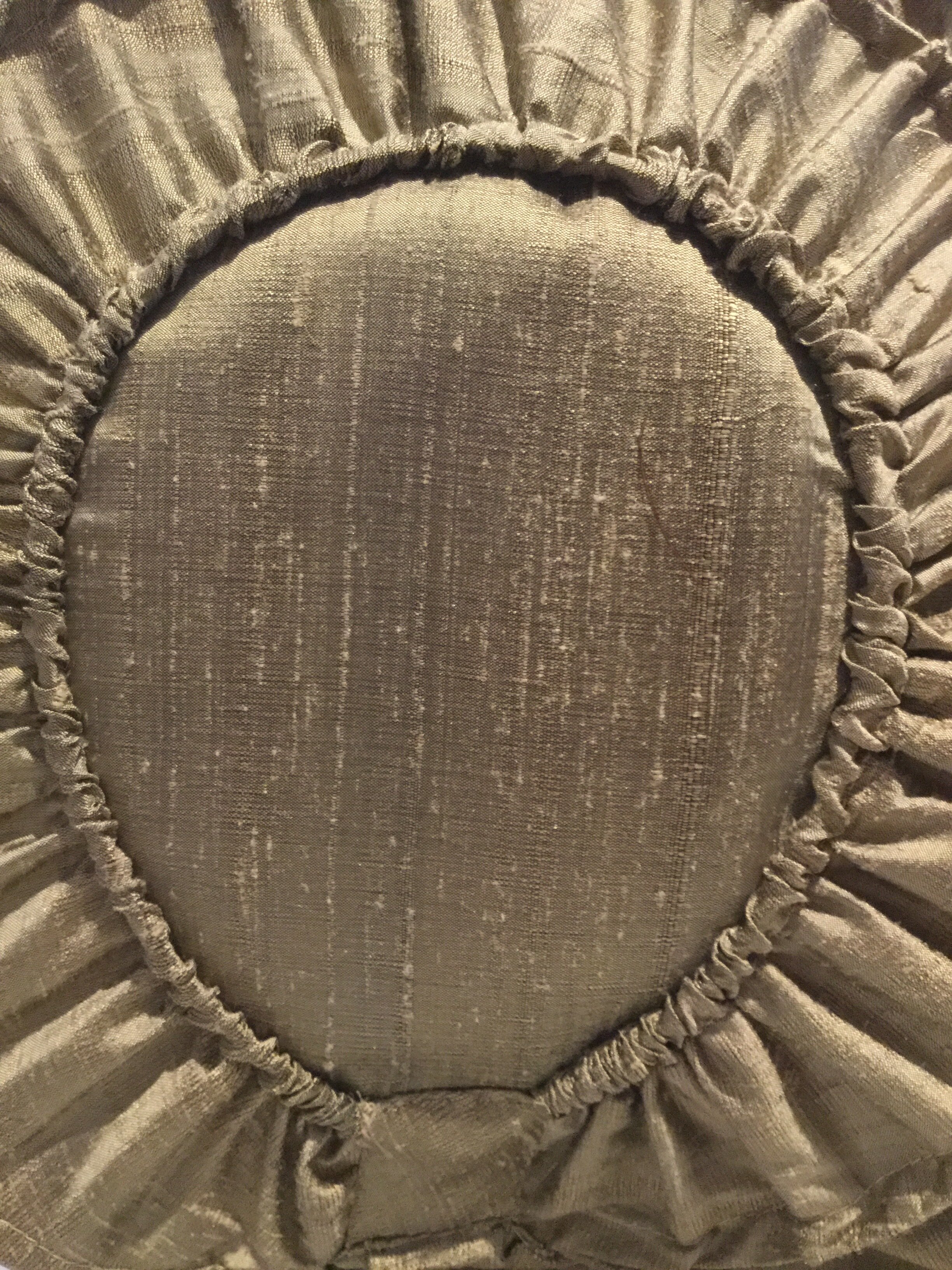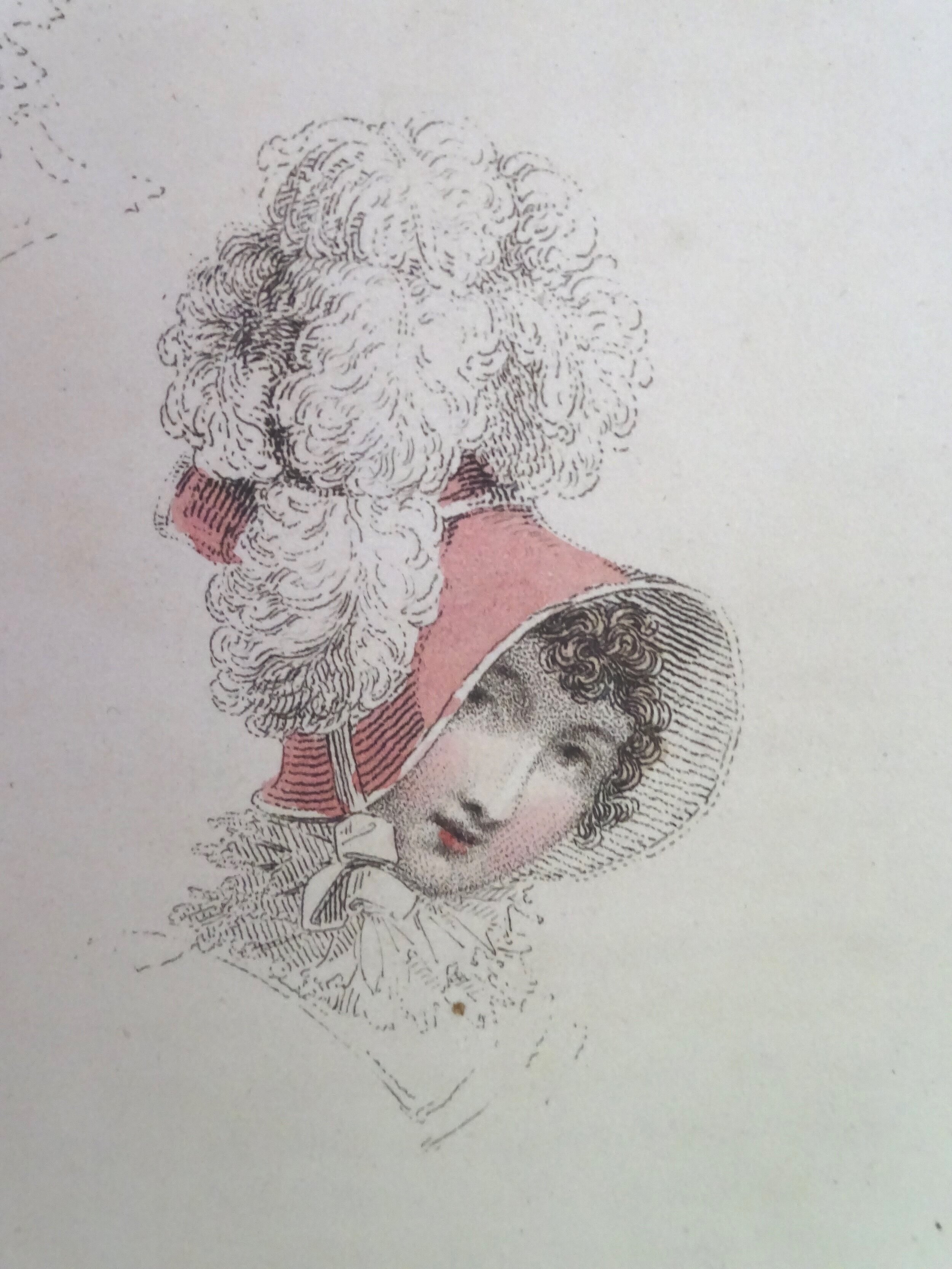Historical Millinery
‘Ugly Bonnet’, Pen and Ink, 2024
After leaving Oxford, Eleanor worked as a milliner, making hats for brides, socialites and race-goers. After returning to academia, her carefully honed skills were not left to languish. To both aid and enrich her studies, she has researched historic millinery practices and recreated hats, bonnets and headdresses found in fashion plates and in museums. By carefully ‘deconstructing’ the processes involved in their original production, Eleanor has learned a great deal about the materials, makers and wearers of eighteenth and nineteenth century headwear as well as the society in which they lived. The finished pieces themselves have been used as museum exhibits, learning tools and in a wide range of productions, but the invaluable knowledge gained informs Eleanor’s work as historical consultant for film and television.
Scroll down for examples of Eleanor’s millinery work and an exciting case study of a bonnet made for Chawton House Museum and Library.
Case Study
To celebrate the bicentenary of the publication of Jane Austen’s ‘Mansfield Park’, Eleanor was commissioned by Chawton House Library, the home of The Centre for the Study of Early Women's Writing, to make a reconstruction of an 1814 bonnet. Austen’s character, Maria Rushworth née Bertram, was chosen as muse and an original Ackermann fashion plate from Chawton was selected as a source of historical inspiration.
Using the same millinery methods and materials that would have been used in the early nineteenth century, the bonnet was meticulously formed. Drawing on archival material, visual and literary sources, and upon her technical skills, Eleanor used a natural straw braid akin to the plait made in the Bedfordshire countryside during the 1800s. To make the central coil that forms the back of the hat, it was necessary to dampen the straw to form a compact spiral. The process was a laborious and uncomfortable one, requiring dexterity and a thick skin. Once the top of the crown was complete, the tension was adjusted to encourage the straw to curve downwards so as to form the sides of the crown. The finished shape was steamed over a bonnet block before being varnished.
The bonnet was then wired and lined with paper and glue. Finally, fine, cream silk was carefully pleated and used to line the inside. An embroidered button holds the lining to the crown. Roses and leaves (made from pure silk, wired ombre ribbon popular during the period the original bonnet would have been made) were formed and used as trimmings. Long lengths of ribbons made at Whitchurch Silk Mill, where silk ribbons are still woven using original looms and techniques, were also added.
Seen from the front, the bonnet’s decorative elements would have framed and enhanced the wearer’s face by surrounding it with a plethora of adornments. One can well imagine how a fashionable bonnet such as this might have been used to full advantage by the desperate Maria Bertram, later Rushworth, in her ill-advised pursuit of Henry Crawford.


